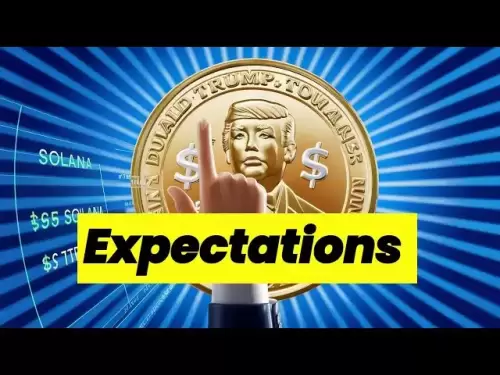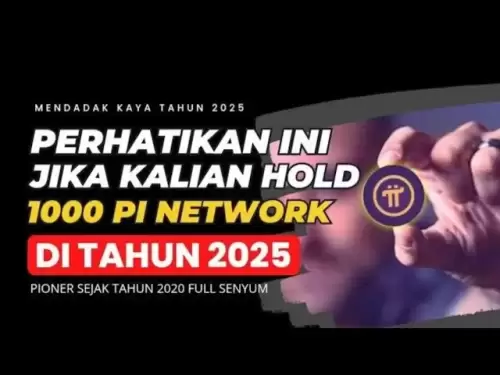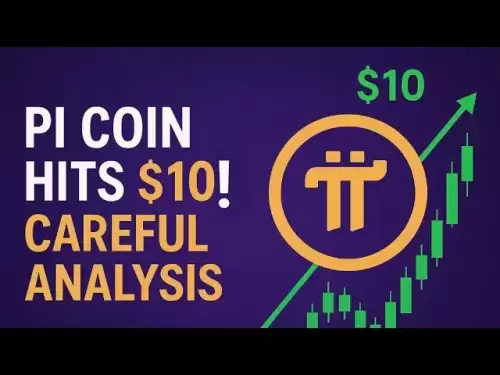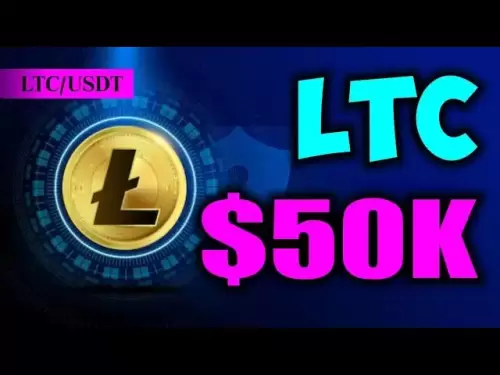-
 Bitcoin
Bitcoin $118100
0.44% -
 Ethereum
Ethereum $3765
5.84% -
 XRP
XRP $3.498
3.12% -
 Tether USDt
Tether USDt $1.000
0.00% -
 BNB
BNB $753.2
3.41% -
 Solana
Solana $181.7
3.58% -
 USDC
USDC $0.9999
0.01% -
 Dogecoin
Dogecoin $0.2704
12.75% -
 Cardano
Cardano $0.8684
5.85% -
 TRON
TRON $0.3151
-0.86% -
 Hyperliquid
Hyperliquid $46.06
4.51% -
 Stellar
Stellar $0.4695
2.48% -
 Sui
Sui $3.910
3.18% -
 Chainlink
Chainlink $19.36
6.65% -
 Hedera
Hedera $0.2750
3.99% -
 Bitcoin Cash
Bitcoin Cash $544.6
6.31% -
 Avalanche
Avalanche $25.12
3.69% -
 Shiba Inu
Shiba Inu $0.00001559
5.40% -
 Litecoin
Litecoin $116.8
5.10% -
 UNUS SED LEO
UNUS SED LEO $8.991
0.05% -
 Toncoin
Toncoin $3.283
2.79% -
 Polkadot
Polkadot $4.509
3.97% -
 Uniswap
Uniswap $10.67
6.58% -
 Ethena USDe
Ethena USDe $1.001
-0.01% -
 Monero
Monero $323.2
0.48% -
 Pepe
Pepe $0.00001410
6.37% -
 Bitget Token
Bitget Token $4.964
1.93% -
 Dai
Dai $0.9998
-0.01% -
 Aave
Aave $326.2
3.85% -
 Bittensor
Bittensor $421.8
2.46%
What is the difference between ERC-20 and ERC-721 tokens?
Ethereum's ERC-20 and ERC-721 standards define fungible and non-fungible tokens, respectively, enabling diverse applications from DeFi to NFTs.
Jul 20, 2025 at 11:22 am
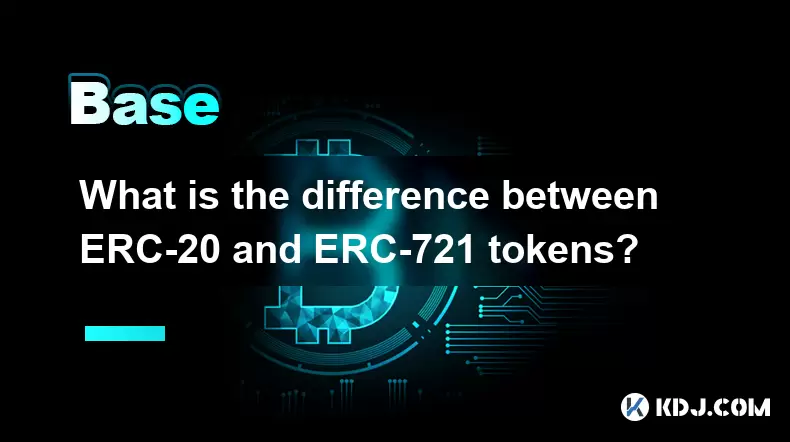
Understanding Token Standards in Ethereum
The Ethereum blockchain has introduced various token standards that define how tokens function within its ecosystem. ERC-20 and ERC-721 are two of the most widely adopted token standards. Each serves a distinct purpose and has unique characteristics. Understanding these differences is crucial for developers, investors, and users engaging with Ethereum-based tokens.
What Is ERC-20?
ERC-20 stands for Ethereum Request for Comments 20, which is a technical standard used for smart contracts on the Ethereum blockchain for implementing tokens. These tokens are fungible, meaning each unit is identical to another and can be exchanged on a one-to-one basis. This standard outlines a set of functions and events that a token contract must implement, including:
- Total supply of tokens
- Balance of a specific address
- Transfer tokens from one account to another
- Approval to allow a third-party account to spend tokens on behalf of the owner
- Allowance tracking for approved spending
ERC-20 tokens are commonly used for fundraising through Initial Coin Offerings (ICOs), decentralized finance (DeFi) applications, and as utility or governance tokens within projects.
What Is ERC-721?
ERC-721 is a token standard that defines non-fungible tokens (NFTs) on the Ethereum blockchain. Unlike ERC-20 tokens, each ERC-721 token is unique and not interchangeable with another token of the same type. This uniqueness makes them ideal for representing ownership of digital or physical assets like artwork, collectibles, virtual real estate, and more.
The standard includes functions and events such as:
- Tracking ownership of each individual token
- Transferring ownership of a specific token
- Approving another address to transfer a token on behalf of the owner
- Enumeration of all tokens owned by a specific address
ERC-721 tokens gained significant popularity with the rise of NFT marketplaces like OpenSea, Rarible, and Mintable, where users can create, buy, and sell unique digital assets.
Key Functional Differences Between ERC-20 and ERC-721
While both token standards are built on the Ethereum blockchain, they differ significantly in terms of functionality and use cases:
- Fungibility: ERC-20 tokens are fungible, meaning each token is indistinguishable from another. In contrast, ERC-721 tokens are non-fungible, meaning each token has a unique identifier and metadata.
- Token Supply: ERC-20 tokens can have a fixed or dynamic supply, while ERC-721 tokens are typically minted individually or in limited quantities, each with a unique ID.
- Transfer Mechanism: ERC-20 allows for bulk transfers of identical tokens, whereas ERC-721 requires each token to be transferred individually, as each represents a distinct asset.
- Ownership Tracking: In ERC-20, balances are tracked per address, but in ERC-721, ownership is tracked per token ID, allowing for more granular control over digital assets.
These differences make each standard suitable for specific applications, with ERC-20 focusing on currency-like tokens and ERC-721 on unique digital collectibles or assets.
Use Cases and Applications
The distinction in functionality between ERC-20 and ERC-721 tokens translates into different real-world applications:
ERC-20 Use Cases:
- Governance tokens in decentralized autonomous organizations (DAOs)
- Utility tokens for accessing platform services
- Stablecoins like USDT or USDC
- DeFi tokens used for staking, lending, and yield farming
ERC-721 Use Cases:
- Digital art and collectibles (e.g., CryptoPunks, Bored Ape Yacht Club)
- Virtual real estate in metaverse platforms
- Gaming assets like weapons, characters, or skins
- Domain names in decentralized naming systems like ENS
Developers choose between these standards based on the nature of the asset they wish to tokenize and the level of uniqueness required.
How to Create an ERC-20 or ERC-721 Token
Creating a token on Ethereum involves deploying a smart contract that adheres to the respective standard. Below are the general steps for each:
Creating an ERC-20 Token:
- Write a smart contract using Solidity that implements the ERC-20 interface
- Define parameters such as token name, symbol, decimals, and total supply
- Deploy the contract using tools like Remix, Truffle, or Hardhat
- Verify the contract on Etherscan for transparency
- Distribute tokens via airdrops, ICOs, or direct transfers
Creating an ERC-721 Token:
- Develop a Solidity contract that complies with the ERC-721 standard
- Include metadata for each token, often stored in IPFS or centralized servers
- Implement minting logic, including ownership and transfer functions
- Deploy the contract to the Ethereum mainnet or testnet
- Mint individual tokens and list them on NFT marketplaces
Each step requires careful planning and testing, especially when handling financial or collectible assets.
Frequently Asked Questions
Q1: Can a token be both ERC-20 and ERC-721?
No, a token cannot be both simultaneously. However, a project may deploy two separate tokens — one ERC-20 for utility and one ERC-721 for collectibles or unique assets.
Q2: Are ERC-721 tokens more expensive to transfer than ERC-20 tokens?
ERC-721 transfers can be more costly if multiple unique tokens are moved individually, whereas ERC-20 allows bulk transfers. However, gas fees depend on network congestion and transaction complexity.
Q3: Can I convert ERC-20 tokens into ERC-721 tokens?
Direct conversion is not possible. However, a project can create a mechanism where ERC-20 tokens are burned to mint ERC-721 tokens, or vice versa, depending on the design.
Q4: Are there other token standards besides ERC-20 and ERC-721?
Yes, several other standards exist, such as ERC-1155, which supports both fungible and non-fungible tokens in a single contract, and ERC-3525, which introduces semi-fungible tokens.
Disclaimer:info@kdj.com
The information provided is not trading advice. kdj.com does not assume any responsibility for any investments made based on the information provided in this article. Cryptocurrencies are highly volatile and it is highly recommended that you invest with caution after thorough research!
If you believe that the content used on this website infringes your copyright, please contact us immediately (info@kdj.com) and we will delete it promptly.
- Crypto & Institutions in July 2025: What's the Hype?
- 2025-07-21 04:30:12
- Pepeto, DOGE, SHIB Prices: What's Hot and What's Not in the Meme Coin Mania
- 2025-07-21 04:30:12
- Bitcoin Bulls Eye $125K Breakout: Is the Digital Gold Rush Back On?
- 2025-07-21 05:10:12
- Decrypting Crypto: Bitcoin's Real-World Utility and the Future of Finance
- 2025-07-21 05:15:12
- Tezos Price Surge: XTZ Prediction & What's Behind the Massive Net Inflows
- 2025-07-21 05:20:12
- Uniswap (UNI) Price Prediction: Bullish Breakout and Market Cap Momentum
- 2025-07-21 05:25:12
Related knowledge

What is the difference between a sidechain and a Layer 2?
Jul 20,2025 at 11:35pm
Understanding the Concept of SidechainsA sidechain is a separate blockchain that runs parallel to the main blockchain, typically the mainnet of a cryp...

What is the Inter-Blockchain Communication Protocol (IBC)?
Jul 19,2025 at 10:43am
Understanding the Inter-Blockchain Communication Protocol (IBC)The Inter-Blockchain Communication Protocol (IBC) is a cross-chain communication protoc...

How does sharding improve scalability?
Jul 20,2025 at 01:21am
Understanding Sharding in BlockchainSharding is a database partitioning technique that is increasingly being adopted in blockchain technology to enhan...

What is the "crypto trilemma" of scalability, security, and decentralization?
Jul 19,2025 at 06:28pm
Understanding the Concept of the Crypto TrilemmaThe crypto trilemma refers to the challenge of simultaneously achieving scalability, security, and dec...

What is a cliff and vesting schedule in tokenomics?
Jul 20,2025 at 10:28am
What Does a Cliff Mean in Tokenomics?In tokenomics, a cliff refers to a specific period during which token holders are not allowed to access or transf...
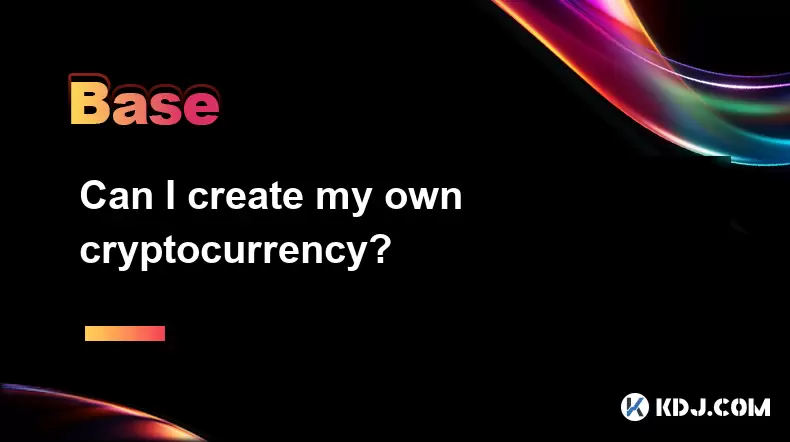
Can I create my own cryptocurrency?
Jul 20,2025 at 11:49pm
Understanding the Basics of Creating a CryptocurrencyYes, you can create your own cryptocurrency, but it involves a combination of technical knowledge...

What is the difference between a sidechain and a Layer 2?
Jul 20,2025 at 11:35pm
Understanding the Concept of SidechainsA sidechain is a separate blockchain that runs parallel to the main blockchain, typically the mainnet of a cryp...

What is the Inter-Blockchain Communication Protocol (IBC)?
Jul 19,2025 at 10:43am
Understanding the Inter-Blockchain Communication Protocol (IBC)The Inter-Blockchain Communication Protocol (IBC) is a cross-chain communication protoc...

How does sharding improve scalability?
Jul 20,2025 at 01:21am
Understanding Sharding in BlockchainSharding is a database partitioning technique that is increasingly being adopted in blockchain technology to enhan...

What is the "crypto trilemma" of scalability, security, and decentralization?
Jul 19,2025 at 06:28pm
Understanding the Concept of the Crypto TrilemmaThe crypto trilemma refers to the challenge of simultaneously achieving scalability, security, and dec...

What is a cliff and vesting schedule in tokenomics?
Jul 20,2025 at 10:28am
What Does a Cliff Mean in Tokenomics?In tokenomics, a cliff refers to a specific period during which token holders are not allowed to access or transf...

Can I create my own cryptocurrency?
Jul 20,2025 at 11:49pm
Understanding the Basics of Creating a CryptocurrencyYes, you can create your own cryptocurrency, but it involves a combination of technical knowledge...
See all articles





















